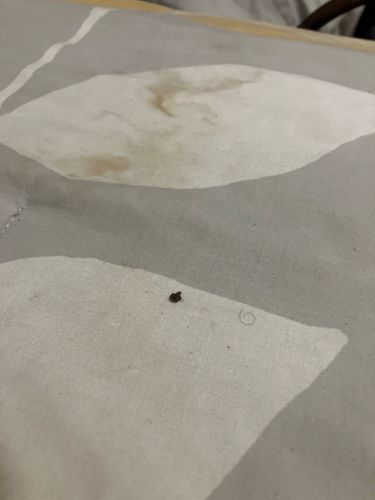Bed Bug
Scientific Name: Cimex lectularius
Order & Family: Hemiptera (order), Cimicidae (family)
Size: Adults are typically 4-5 mm (0.16-0.20 inches) long, about the size of an apple seed.

Natural Habitat
Primarily lives in human dwellings, typically hiding in cracks and crevices in mattresses, bed frames, furniture, walls, and behind wallpaper. They are most active at night.
Diet & Feeding
Strictly hematophagous, meaning they feed exclusively on the blood of warm-blooded animals, primarily humans.
Behavior Patterns
Nocturnal feeders, emerging from their hiding spots to feed on sleeping hosts. They are attracted to carbon dioxide and body heat. They tend to live in groups and leave behind fecal spots (digested blood) which appear as small, dark stains, like those seen in the image, especially near their harborage areas.
Risks & Benefits
Risks: Bed bugs are considered a public health pest. Their bites can cause itchy welts, skin irritation, and in some individuals, allergic reactions. Heavy infestations can lead to sleep deprivation and psychological distress. While not known to transmit diseases to humans, their presence is a significant nuisance. Benefits: None known to humans; they are generally considered pests.
Identified on: 10/8/2025